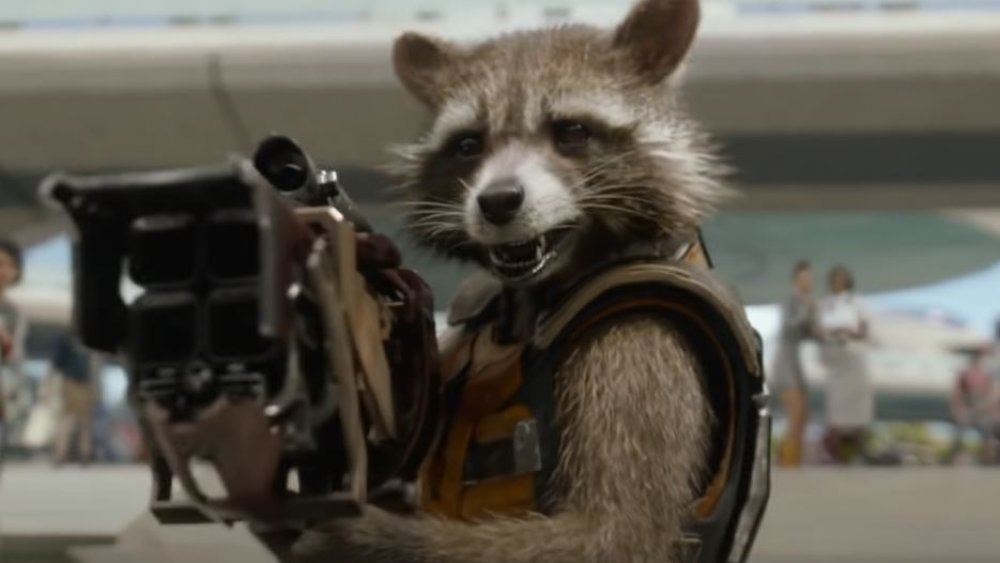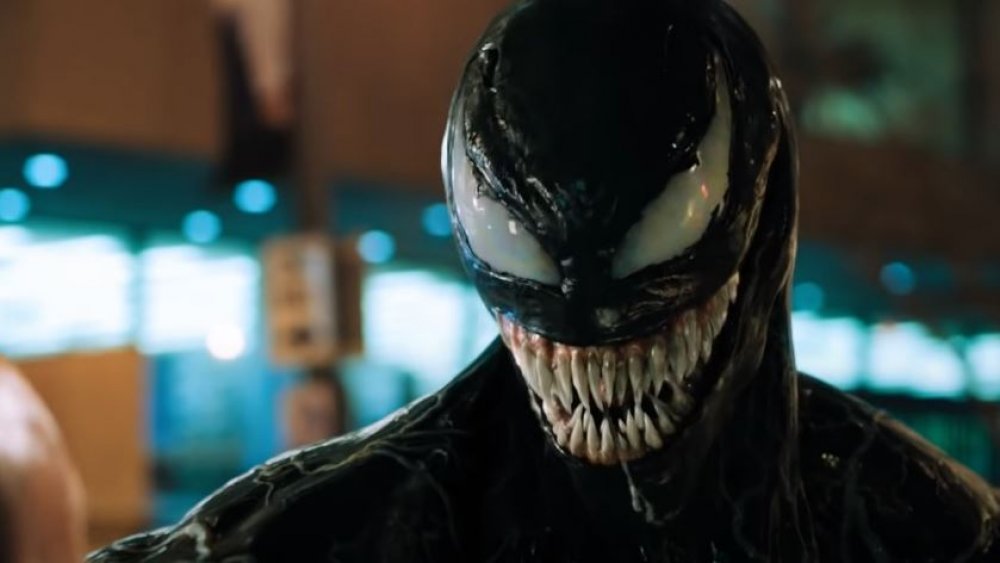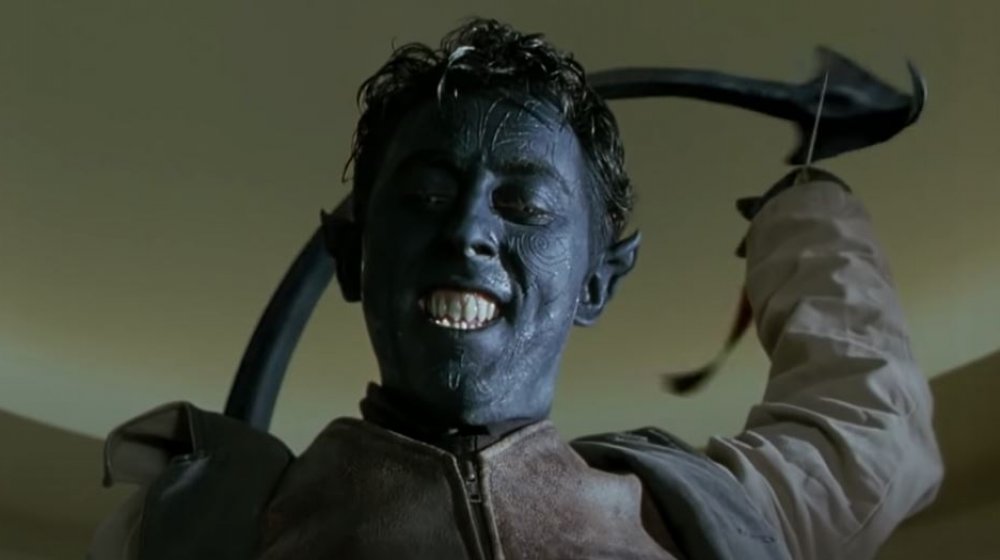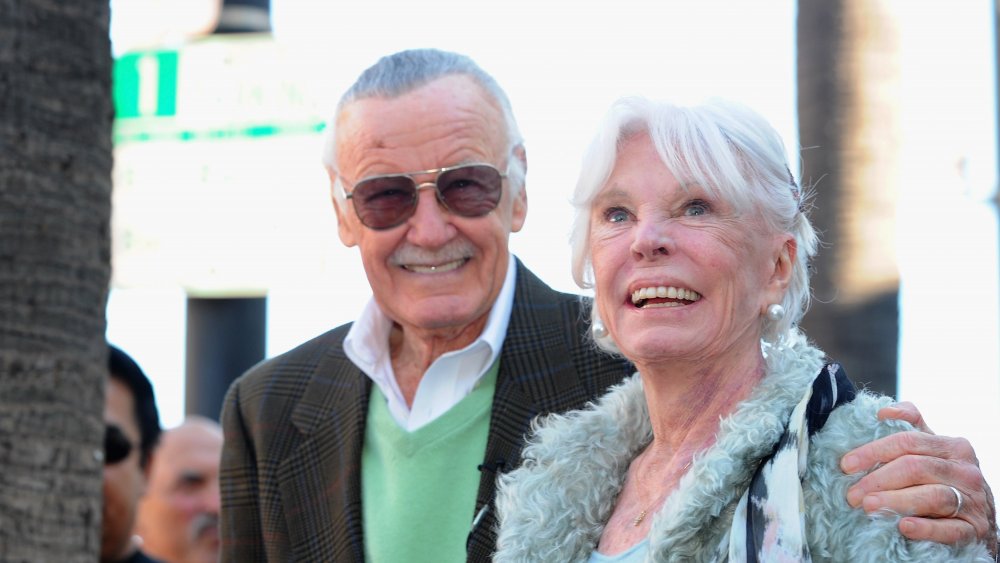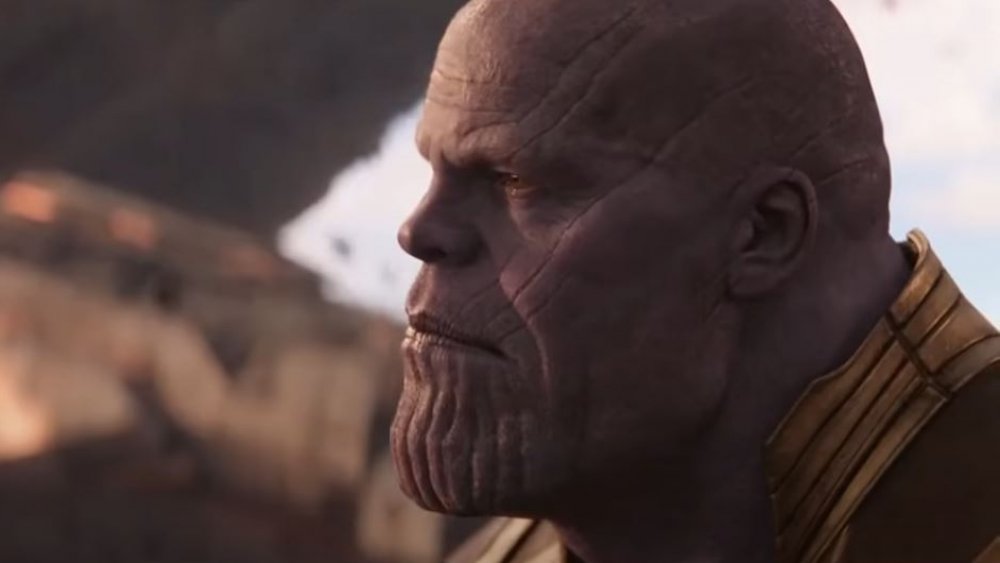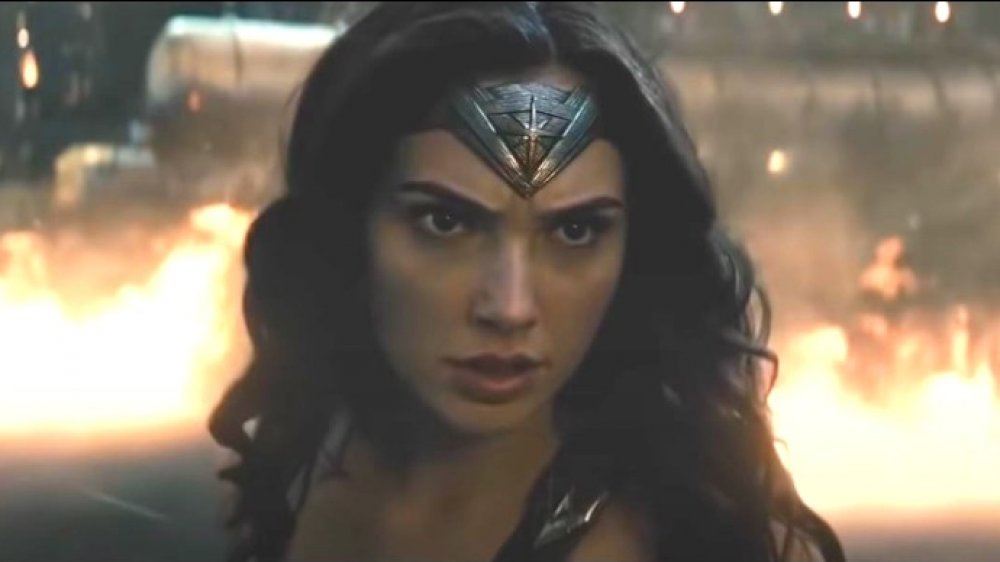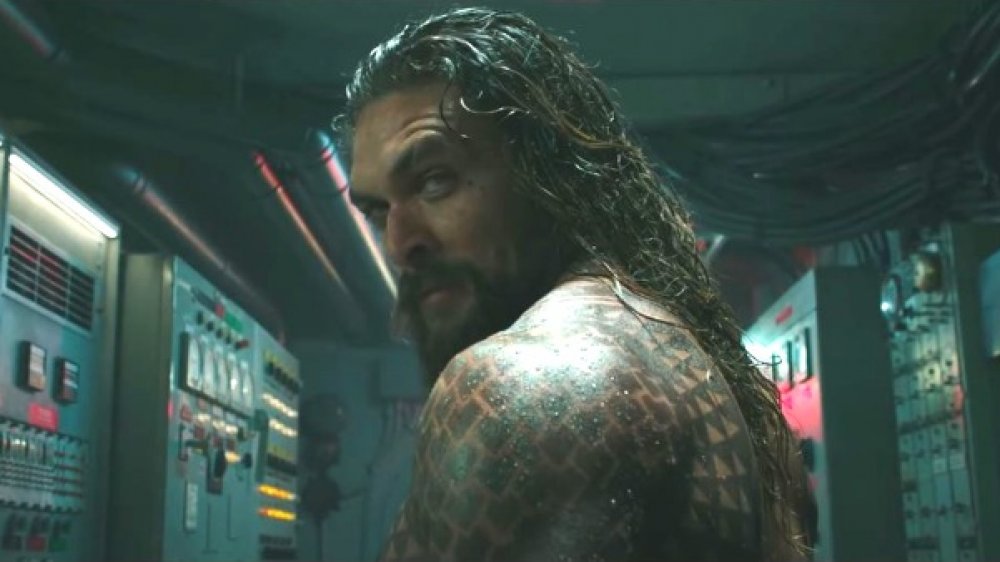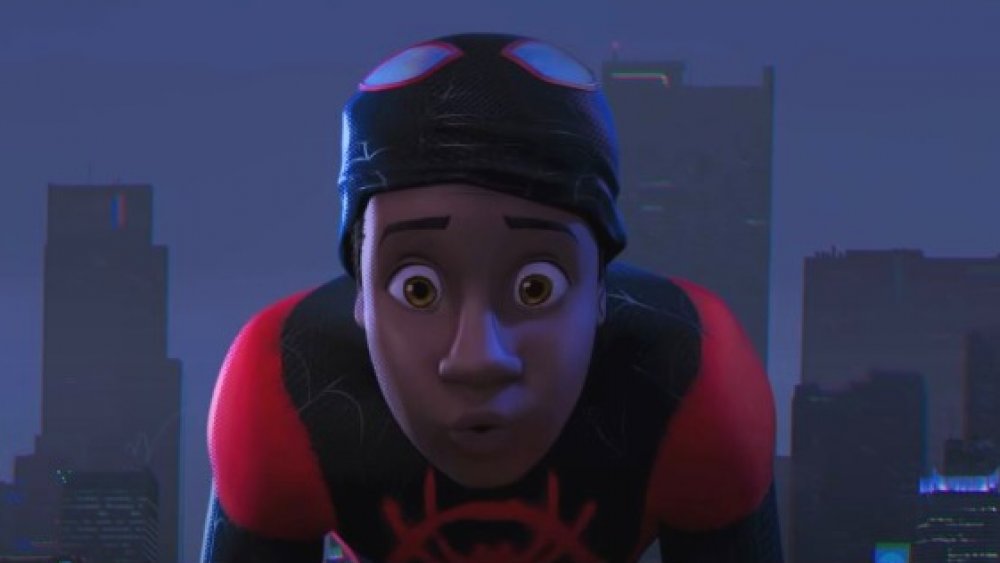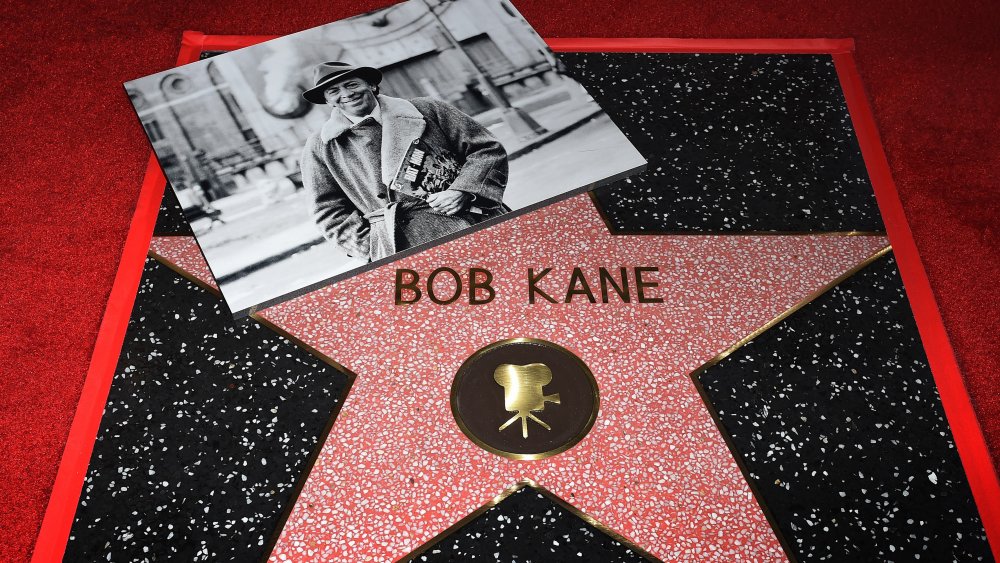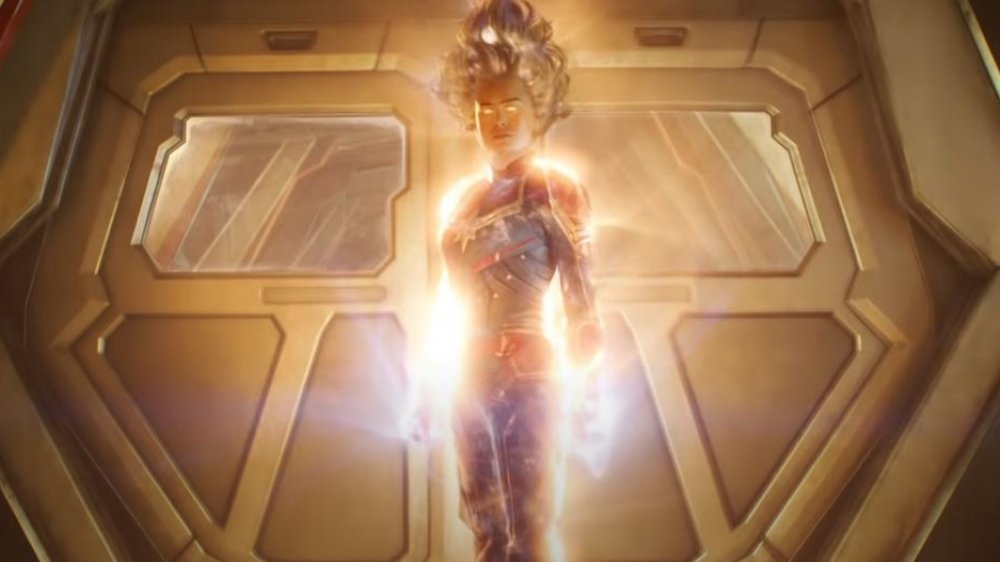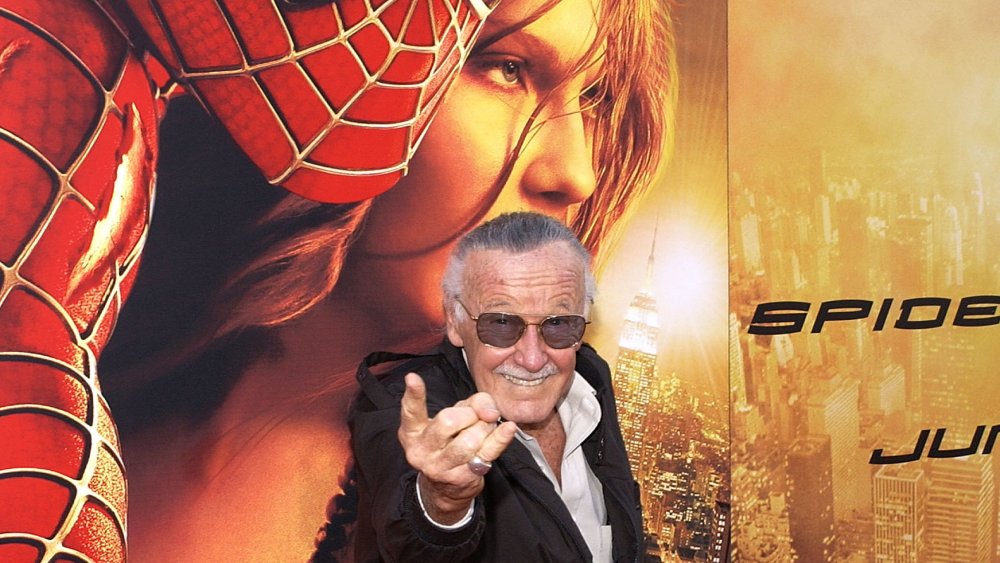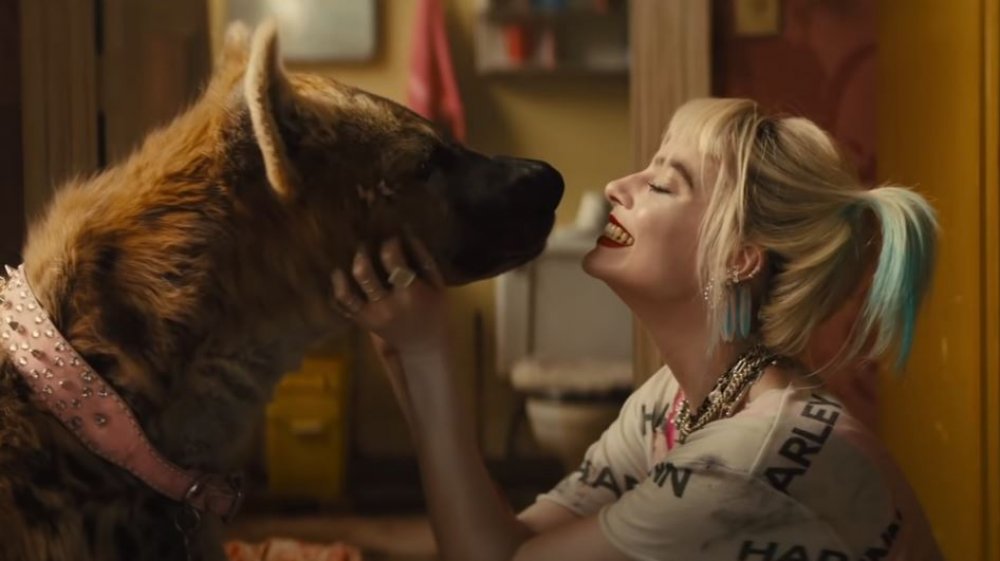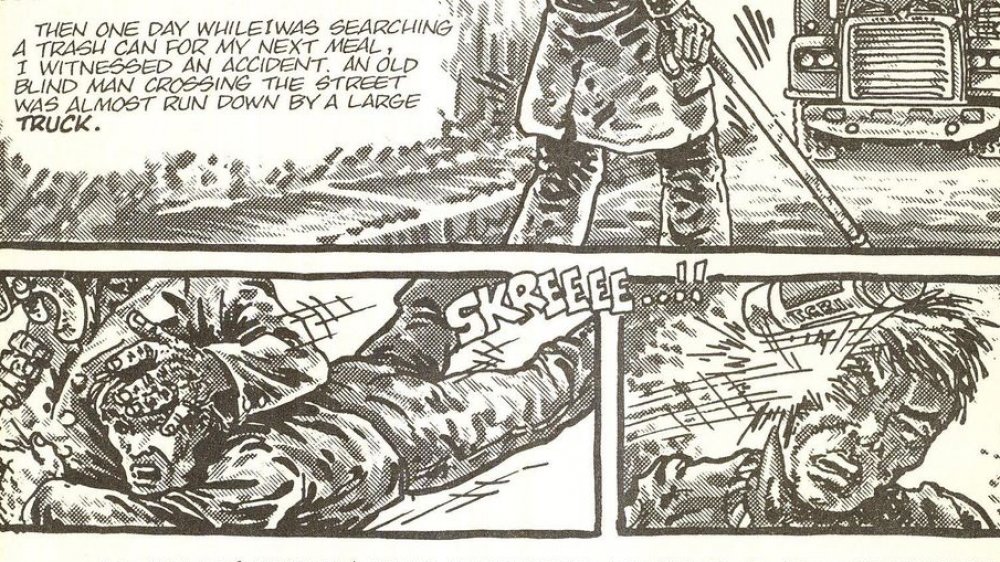Weird Real-Life Origin Stories Of Your Favorite Superheroes
If superhero movies are part of your regular diet, then origin stories are your favorite appetizer. After all, the best do-gooders in popular culture aren't born but made. Whether you're a baby who gets rocketed off a doomed world, a teenage outcast who learns about power and responsibility, or a young demigoddess raised on an island of Amazons, these tales of recreation are modern myths, filled with wonder, mystery, magic, and pain ... unless you're Wolverine, of course, whose origin pretty much only involves excruciating pain, with none of the happy things. Sorry, bub.
Behind the scenes, though, the true stories behind how superheroes get created can be just as fascinating as the fictional ones. What strange factors inspired the creation of these iconic heroes and villains? What real life struggles led to great comic books? While you won't find any real-life gamma ray explosions or radioactive spiders here, these true tales only further enhance the legendary characters they spawned.
Venom originated from a fan writing a letter to Marvel
From his sinister, sharp-toothed grin to his dark sense of humor, Venom is the perfect embodiment of the "Anti-Spider-Man" concept. The only bummer? Since nobody wants to swing around with their archenemy in matching onesies, Venom's arrival meant that Spidey had to dump his stylish black costume.
Funny thing about Spidey's black suit, though: It was created by a 22-year-old fan named Randy Schueller, according to Comic Book Resources, who submitted his concept to Marvel in 1982. His sketches had a blood-red spider instead of a white one, and the outfit was composed of unstable molecules instead of having extraterrestrial origins. All the same, Marvel was jazzed about the idea, so they paid Schueller $220, and asked him to write the story. Schueller admits that scripting wasn't really his thing, so his version of the story never made print, but he was nonetheless psyched when other writers and artists brought it to life. "I had no regrets," he later wrote. "As a true blue Spidey fan, this was a very cool moment in my life." That said, he never warmed up to the villainous plot twist that arrived later: "When VENOM was created I was...disturbed. I was never a fan of the costume-turned-villain idea."
In 2019, Marvel announced the release of a comic adapting Schueller's original story, according to Bleeding Cool, finally giving the guy his well-deserved credit.
Nightcrawler was almost a DC character
Who's your favorite X-Men character? Ask any group, and once you get through the obvious ones like Wolverine, Jean, Magneto, and Storm, there'll always be one quirky person who likes Nightcrawler the best. Could any character more perfectly illustrate the X-Men's central themes?
Fascinatingly enough, Nightcrawler didn't begin as a Marvel character. According to TwoMorrows, the late artist Dave Cockrum first dreamed him up while he was in the Navy, stationed in a run-down house in Guam with his wife, though he originally envisioned Nightcrawler as a literal demon with werewolf tendencies. Later, when Cockrum worked for DC Comics, according to Comic Book Resources, he pitched Nightcrawler as a potential member for a new superhero team called the Outsiders. That didn't work out, so when Marvel hired him as an artist for their brand new X-Men reboot, he pitched Nightcrawler again — and this time, the pieces slid into place. To be clear, Nightcrawler evolved quite a bit on his way from being a sinister alien, as shown by Marvel Age of Comics, to the cuddly, spiritually devout mutant you know today, but thankfully, Marvel never lost sight of Cockrum's key role: The New York Times says that Cockrum continued earning royalties from the character until his death in 2006.
Stan Lee's wife inspired the Fantastic Four (and thus, the Marvel Universe)
So far, the Fantastic Four haven't had much luck on the big screen. In the comics, though, this team of squabbling adventurers is the foundation of the Marvel Universe. Back in 1960, a young Stan Lee had grown tired of the simplistic, cardboard cutout narratives and characters he was being told to write, and according to The Washington Post, he was about to quit comics altogether. Joan, his wife, reportedly responded in a manner that may have changed the course of pop culture history: 'Why not write it the way you want to write it? If it doesn't work, the worst that's going to happen is that they'll fire you."
Well, as it happens, publisher Martin Goodman had already tasked Lee with creating a superhero team to rival DC's Justice League of America, so, Lee took his wife's advice to heart. He and Jack Kirby created the Fantastic Four, a bickering squad of troubled personalities, each one desperately human rather than idealized. As Paste Magazine explains, Lee and Kirby's Fantastic Four comics sets the new standard for similarly troubled heroes like Hulk, Spider-Man, and Iron Man, and while the "Who created what?" aspect of the Lee/Kirby partnership is always a debate, it's clear that comics fans owe both men — and Joan Lee — a debt of gratitude.
Jim Starlin had been working on Thanos since college
The big bad of the Marvel Universe, Thanos, is one dude you shouldn't mess with, and his name immediately makes that obvious. Now, while any liberal arts major will happily explain the etymology of "Thanos" to you, creator Jim Starlin has mentioned that he also used to pass by a Greek restaurant named Thanotos on his way home from the Marvel offices, according to Inverse, which certainly must've got those ol' creative gears turning. As Starlin said later, "That always struck me as a strange name for a restaurant." He never stopped in for a meal, though. Can you blame him? It sounds like the sort of place a cosmic purple dictator might frequent.
Name aside, Starlin had been envisioning his villainous character long before that. The initial spark came from a psychology class Starlin took in college, regarding the Greek god Thanatos, who personified death. A few weeks later, he started sketching a character who represented both the dark and light sides of human nature, and he later brought this concept to Marvel. The moment of truth came in 1973, according to SyFy, when the regular Invincible Iron Man artist had to go in for surgery. Starlin was asked to fill in, so he quickly snuck Thanos into the Marvel Universe, in a minor appearance that nonetheless paved the way for a very purple future.
Wonder Woman's invention is a story unto itself
Arguing that superheroes "shouldn't be political" is an awfully silly line of reasoning, considering that the genre itself was created by Jewish artists and writers, specifically pitting their larger-than-life characters against Nazis. The feminist roots of Wonder Woman, though, are even more political than the norm. The New Yorker reports that Wonder Woman, first created by William Moulton Marston in 1941, was always intended to disrupt the status quo by showing young readers a strong, independent, self-confident female role model, who was just as capable at high-stakes heroics as all the male heroes of the time but also retained strong feminine qualities. As Marston himself wrote, "Frankly, Wonder Woman is psychological propaganda for the new type of woman who should, I believe, rule the world." Hey, he never claimed he was being subtle.
Behind the scenes, Marston's own life, and the inspirations for his most famous character, were no less interesting, as the BBC points out. For one, he invented the lie detector, which gives that lasso of truth some additional context. Furthermore, Marston was in a polyamorous relationship with two women for decades — his wife Elizabeth and his live-in mistress Olive Byrne — both of whom inspired Wonder Woman, from Olive's bracelets to Elizabeth being the one who first suggested the notion of a female superhero. If this sounds like it could be a movie, well, it is. Professor Marston & the Wonder Women came out in 2017.
You like Jason Momoa's Aquaman? Thank Peter David
In the past few years, Aquaman's public reputation has undergone a serious upgrade. Though he was once considered the lame, square dude who talks to fishes, a generation of fans now know Aquaman as the badass, long-haired rebel played by Jason Momoa.
The true credit for this goes to a comic book writer named Peter David, who, back in the nineties, set the blueprint for how to make Aquaman cool. See, back when David first came on board, Aquaman was perceived as being a low-sales loser, so David had the character hole up in a cave and reemerge with a beard, long hair, a broodier attitude, and a "barbarian nobility," as SyFy explains. Finally, David firmly established that, as the kids say, "this ain't your daddy's Arthur Curry," by severing Aquaman's hand and having the him replace it with a harpoon that would make Ash Williams jealous. This newer, gruffer Aquaman is the one that went on to appear in the Justice League cartoon, inspired the Jason Momoa version, and has largely replaced the old-school cheeseball in popular culture. David himself is quite pleased by this development, as he wrote on his blog.
Another Peter David creation that hit the big screen? The intelligent "merged" Hulk seen in Avengers: Endgame, as noted by ComicBook.com.
How Donald Glover and Barack Obama led to a new Spider-Man
How did Miles Morales, of Spider-Man: Into the Spider-Verse, come about? Well, it all began with Barack Obama. No, really. You probably remember how the historic election of the now-former president was a huge deal, right? Marvel thought so, too, and since they'd already been toying with the idea of replacing an alternate universe version of Peter Parker with a new legacy character (long story), and since a central part of Spider-Man's appeal is the whole "it could be anyone behind the mask" deal, this planted the seed for a new, biracial Spider-Man to come into the fold, as The Atlantic notes. These conversations went on for a few years, and then, something else happened: When the Spider-Man movies rebooted, and the search for a new Peter Parker was underway, there was a surprisingly large fan campaign to get the multi-talented performer Donald Glover cast in the role, according to Polygon.
While Glover didn't get cast, a strong case was made for why he could have been a really awesome Spidey, and the creators of the comic book Ultimate Spider-Man were convinced. And so, in 2011, Brian Michael Bendis and Sara Pichelli introduced Miles Morales, bringing this concept onto the printed page.
Batman's Bob Kane fiasco
In real life, nobody surprised Thomas and Martha Wayne in a dark alley, shot them, and left some poor kid to pick up the pieces. However, some seriously shady stuff did happen, courtesy of a guy named Bob Kane.
Recognize that name? You should, considering that Kane used all kinds of legal trickery to establish his role as being the single creator of Batman, as seen in the credits of every Batman movie ever made. The problem, as SyFy notes, is that not only did Kane not work alone, but arguably, a guy named Bill Finger did a lot more: While Kane did come up with the idea for a superhero named Bat-Man, Finger created the costume, the name Bruce Wayne, the Batmobile, Gotham City, Robin, Catwoman, Batman's origin story ... and just about everything else. Nonetheless, Kane carefully went out of his way to ensure that Bill Finger never got any credit. Seriously, the dude's bizarrely eccentric grave goes so far as to credit God with divinely inspiring the creation of Batman. And then, in 1965, Kane even wrote a letter to the fan magazine Batmania, reprinted today on TwoMorrows, wherein he blatantly lied about Finger's contributions, claiming that his former coworker was trying to steal credit.
Sadly, Haaretz reports that Bill Finger died in 1974, penniless and unrecognized.
Kelly Sue DeConnick turned Captain Marvel into a powerhouse
In the past few years, Carol Danvers has become one of Marvel's biggest heroes, and while the character has technically been around for decades — under a continually changing array of identities, from Binary to Warbird — the Carol you know today is largely the product of Kelly Sue DeConnick, who remade her for the 21st century. As DeConnick told Vox, "I mean, if I were to die tomorrow, Captain Marvel would appear in the first line of my obituary."
DeConnick was the one who renamed her Captain Marvel, finally giving the publisher a definitive hero to fit that definitive name. DeConnick was the one who firmly established the character's mythology and leaned hard into her defiant, adventurous personality. DeConnick also turned her from an underrated second-stringer to an A-list headliner, thereby spawning a massive fan base, dubbed the Carol Corps, and paving the way for the 2019 film.
Marvel's publisher hated the whole Spider-Man concept
You know Spider-Man's origin by heart. It's been told on the big screen enough times, that's for sure, even though some fans are still hoping to one day see Tobey Maguire cameo as the MCU version of Uncle Ben (c'mon, you know it'd be awesome). Back when Stan Lee and Steve Ditko first came up with the idea of a troubled, working-class teen superhero with a troubled social life, though, these concepts weren't familiar — they were radical. When Lee first presented Spider-Man to Marvel Comics owner Martin Goodman, as Rolling Stone reports, Goodman thought the concept was garbage. Teens were supposed to be sidekicks, not the main protagonist, and as Stephen Krensky's Comic Book Century further elaborates, Goodman found the idea of an arachnid-themed do-gooder nonsensical because, "People hate spiders."
Spider-Man had been vetoed, but meanwhile, a comic series titled Amazing Adult Fantasy was about to be cancelled with its 15th issue. So, Lee craftily retitled the final issue and snuck Spider-Man's origin into the pages. Surprising just about everyone, this dark and weird story of a troubled teen proved a massive hit with readers, and Spider-Man won his own book.
Harley Quinn was supposed to be a one-off
Hey, you remember how, back in the campy ol' Adam West/Burt Ward Batman show, the villains always had elaborately costumed goons — i.e., a bunch of grown men wearing bowler hats and black sweaters that literally spell out "HENCHMAN" — accompanied by a top henchwoman, right? So did Batman: The Animated Series writer Paul Dini, according to The Hollywood Reporter, who originally concocted Harley Quinn as a one-off reference to this trope. She was never intended to be a recurring character, much less the superstar now played by Margot Robbie in films like Birds of Prey.
The twist? When Dini and co-creator Bruce Timm were coming up with Harley, they based her look, style, and wisecracking personality on Dini's old college buddy, Days of Our Lives actress Arleen Sorkin. It seemed only fitting, then, to hire Sorkin to voice the new character, and sure enough, the actress brought Harley Quinn to life. As Timm says today, "When we got the rough footage for that first episode back and we saw her character actually moving in animation and paired up with Arleen's voice and the personality they gave her, it was, "Oh wow. There's something here." It was immediately apparent to everybody."
Obviously, given Harley's 21st-century explosion in fame, this proved a good decision.
The Teenage Mutant Ninja Turtles started out as a Daredevil parody
The Teenage Mutant Ninja Turtles were born in Dover, New Hampshire, on an otherwise ordinary day in 1983, according to The Week, when the two creative minds behind Mirage Studios, Peter Laird and Kevin Eastman, started doodling badass turtle ninjas with deadly weapons. Why? For fun. But as the drawings grew increasingly elaborate, the idea's potency revealed itself, so the two men decided to make it a real comic. And to flesh out the backstory of these heroes in a half-shell, they simply lampooned Frank Miller's then-contemporary Daredevil comics in a hilarious fashion that, over the years, has often gone unnoticed.
Don't believe it? Read the signposts. For one, as Screen Rant points out, the Turtles are born when a young Matt Murdock (though never named in the comic) saves a blind old man and is blinded by the infamous "ooze" ... which then leaks into the sewers and turns the turtles into mutant superheroes. Two, the Turtles are then trained by an elderly ninja rat named Splinter, just like how Daredevil's mentor was an elderly ninja named Stick. Need another? While Daredevil fights a massive ninja organization known as the Hand, the Turtles must take on the Foot. Convinced yet?
How Rocket saved his creator
In the Marvel Universe, Rocket is a wisecracking raccoon who likes big guns. The Beatles, as you might recall, released a song in 1968 called "Rocky Raccoon." Coincidence? Nah. As explained by NerdSync, creators Bill Mantlo and Keith Giffen's introduction of a literal raccoon superhero was an obvious homage to the Beatles song, intended as a one-off joke. However, Mantlo clearly loved the little furry guy, so he reintroduced him six years later, going so far as to have Rocket team up with a guy named Wal Russ. Get it?
Sadly, in the real world, Mantlo was disabled in a tragic hit-and-run accident, according to The Hollywood Reporter, resulting in a traumatic brain injury. For the next few decades, Mantlo was confined to a nursing home, and while his brother Michael wanted to bring him home, financial barriers made it impossible ... until Mantlo's furry creation came around to help. How so? Well, when Marvel Studios' Guardians of the Galaxy was gearing up for release, Marvel acknowledged Mantlo's creative influence and agreed to a compensation package that finally gave the Mantlo brothers the funds they needed so that Michael could bring Bill out of the nursing home, improve his quality of life, and move him into a house on Michael's property.
